by Mary Salinas | Oct 20, 2018
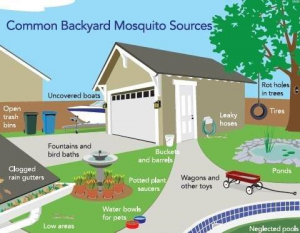
A natural disaster such as Hurricane Michael can cause excess standing water which leads nuisance mosquito populations to greatly increase. Floodwater mosquitoes lay their eggs in the moist soil. Amazingly, the eggs survive even when the soil dries out. When the eggs in soil once again have consistent moisture, they hatch! One female mosquito may lay up to 200 eggs per batch . Standing water should be reduced as mush as possible to prevent mosquitoes from developing.
You should protect yourself by using an insect repellant (following all label instructions) with any of these active ingredients or using one of the other strategies:
- DEET
- Picaridin
- Oil of lemon eucalyptus
- Para-menthane diol
- IR3535
- An alternative is to wear long-sleeved shirts and pants – although that’s tough in our hot weather
- Wear clothing that is pre-treated with permethrin or apply a permethrin product to your clothes, but not your skin!
- Avoid getting bitten while you sleep by choosing a place with air conditioning or screens on windows and doors or sleep under a mosquito bed net.
Now let’s talk about mosquito control in your own landscape.
Let’s first explore what kind of environment in your landscape and around your home is friendly to the proliferation of mosquitoes. Adult mosquitoes lay their eggs on or very near water that is still or stagnant. That is because the larvae live in the water but have to come to the surface regularly to breeze. The small delicate larvae need the water surface to be still in order to surface and breathe. Water that is continually moving or flowing inhibits mosquito populations.
Look around your home and landscape for these possible sites of still water that can be excellent mosquito breeding grounds:
- bird baths
- potted plant saucers
- pet dishes
- old tires
- ponds
- roof gutters
- tarps over boats or recreational vehicles
- rain barrels (screen mesh over the opening will prevent females from laying their eggs)
- bromeliads (they hold water in their central cup or leaf axils)
- any other structure that will hold even a small amount of water (I even had them on a heating mat in a greenhouse that had very shallow puddles of water!)
You may want to rid yourself of some of these sources of standing water or empty them every three to four days. What if you have bromeliads, a pond or some other standing water and you want to keep them and yet control mosquitoes? There is an environmentally responsible solution. Some bacteria, Bacillus thuringiensis ssp. israelensis or Bacillus sphaericus, only infects mosquitoes and other close relatives like gnats and blackflies and is harmless to all other organisms. Look for products on the market that contain this bacteria.
For more information:
Mosquito Repellents
UF/IFAS Mosquito Information Website
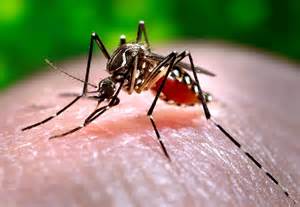
by Sheila Dunning | Aug 13, 2015
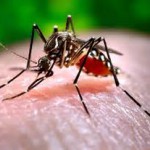 University of Florida researchers maintain a constant vigilance on the potential for mosquito-borne illness concerns. UF/IFAS Florida Medical Entomology Laboratory in Vero Beach tracks rainfall, groundwater levels, mosquito abundance, wild bird populations and virus transmission to animals including horses and sentinel chickens. When mosquito infection rates reach the levels that can infect humans, alerts are sent out. Through the Florida Department of Health, the Centers for Disease Control and Prevention Health Alert Network issues advisories on a weekly basis to those counties at risk. Such an alert was issued for Gadsden, Polk and Walton Counties for the week of July 19-25, 2015. Unfortunately, the first 2015 confirmed human case of West Nile Virus illness in Florida occurred in Walton County shortly thereafter. It was just another reminder for people to take action to reduce their potential for mosquito development in their landscape.
University of Florida researchers maintain a constant vigilance on the potential for mosquito-borne illness concerns. UF/IFAS Florida Medical Entomology Laboratory in Vero Beach tracks rainfall, groundwater levels, mosquito abundance, wild bird populations and virus transmission to animals including horses and sentinel chickens. When mosquito infection rates reach the levels that can infect humans, alerts are sent out. Through the Florida Department of Health, the Centers for Disease Control and Prevention Health Alert Network issues advisories on a weekly basis to those counties at risk. Such an alert was issued for Gadsden, Polk and Walton Counties for the week of July 19-25, 2015. Unfortunately, the first 2015 confirmed human case of West Nile Virus illness in Florida occurred in Walton County shortly thereafter. It was just another reminder for people to take action to reduce their potential for mosquito development in their landscape.
With all the quick afternoon thunderstorms and frequent irrigation events, now is the time to check out where the water is collecting in your yard. The female Culex nigripalpus mosquitoes lay their eggs in temporary flood water pools; even very small ones such as pet watering bowls, bird baths and upturned Magnolia leaves. Dumping out the collection containers every couple of days can greatly reduce the population.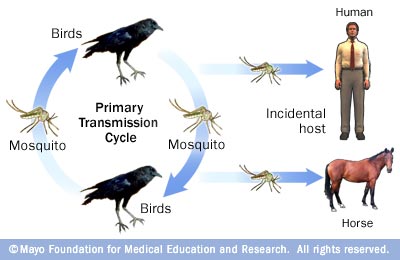
Becoming infected with West Nile Virus is not easy. Mosquitoes usually obtain the virus by feeding on infected wild birds, many of which have migrated from areas that have ongoing West Nile Virus outbreaks. Once the mosquito has drawn infected blood from the bird, the virus goes through a temperature-dependent incubation period within the mosquito. Then, when the infected mosquito “bites” a human or horse the virus mixed in saliva is released into the blood stream of the second host. West Nile Virus is not transmitted from one human to another. Nor is it transmitted from bird to human or from horse to human.
Thanks to a devoted set of researchers and government public health officials, here in Florida we are able to monitor mosquito-borne illnesses quickly and effectively. Additional partners, such as local veterinaries, sentinel bird stations and the Florida Fish and Wildlife Conservation Commission (FWC) serve as reporters for virus population. Should an individual come across dead birds without an obvious cause, reporting them to the FWC at www.myfwc.com/bird/ is the best thing to do.
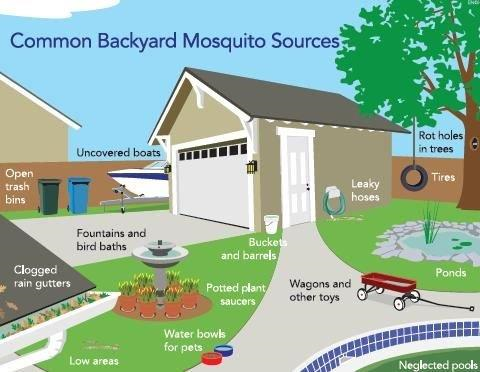 As for protecting yourself, here are a few pointers:
As for protecting yourself, here are a few pointers:
Stay indoors at dusk (peak mosquito biting time).
If you must be outside, wear long sleeves and pants and/or mosquito repellents containing the active ingredient DEET.
Repair torn door and window screens.
Remove unnecessary outside water sources.
Flush out water collected in outdoor containers every 3-4 days.
Disturb or remove leaf litter, including roof gutters and covers on outdoor equipment.
For additional information, contact your local Extension office about obtaining a free Florida Resident’s Guide to Mosquito Control.





